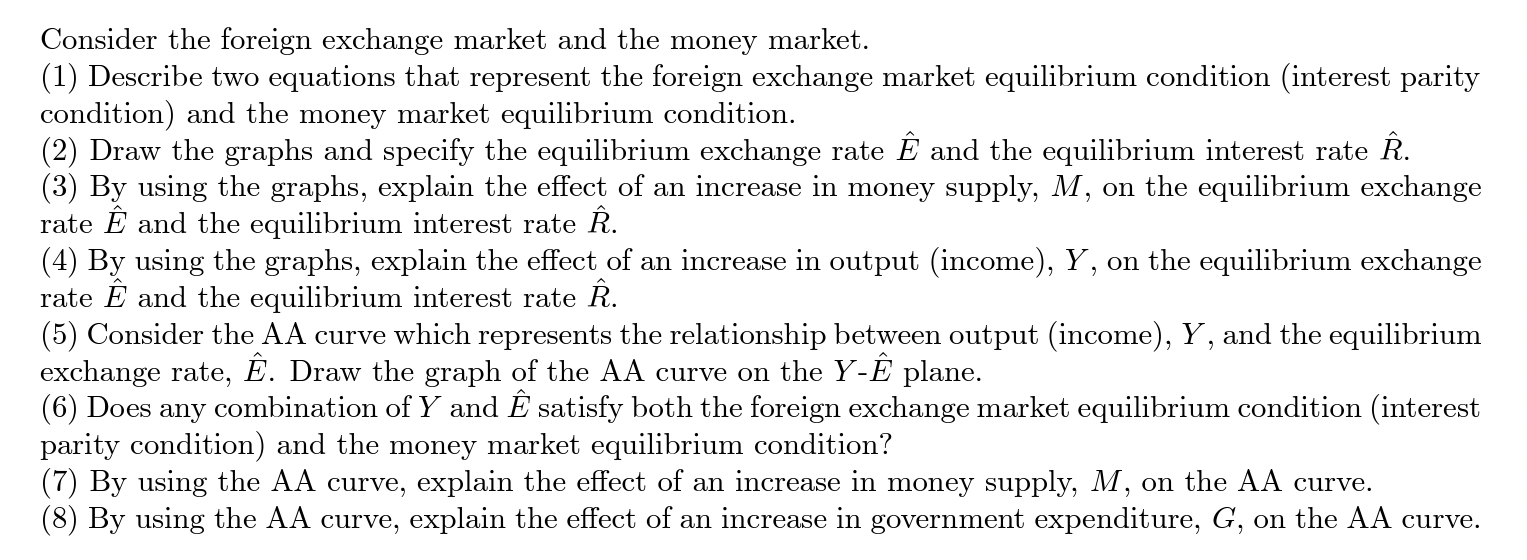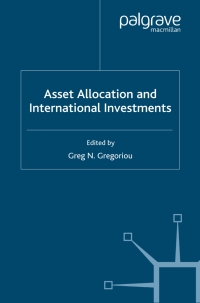
2 Consider the foreign exchange market and the money market. (1) Describe two equations that represent the foreign exchange market equilibrium condition (interest parity condition) and the money market equilibrium condition. (2) Draw the graphs and specify the equilibrium exchange rate and the equilibrium interest rate . (3) By using the graphs, explain the effect of an increase in money supply, M, on the equilibrium exchange rate and the equilibrium interest rate . (4) By using the graphs, explain the effect of an increase in output (income), Y, on the equilibrium exchange rate and the equilibrium interest rate . (5) Consider the AA curve which represents the relationship between output (income), Y , and the equilibrium exchange rate, . Draw the graph of the AA curve on the Y- plane. (6) Does any combination of Y and satisfy both the foreign exchange market equilibrium condition (interest parity condition) and the money market equilibrium condition? (7) By using the AA curve, explain the effect of an increase in money supply, M, on the AA curve. (8) By using the AA curve, explain the effect of an increase in government expenditure, G, on the AA curve. 2 Consider the foreign exchange market and the money market. (1) Describe two equations that represent the foreign exchange market equilibrium condition (interest parity condition) and the money market equilibrium condition. (2) Draw the graphs and specify the equilibrium exchange rate and the equilibrium interest rate . (3) By using the graphs, explain the effect of an increase in money supply, M, on the equilibrium exchange rate and the equilibrium interest rate . (4) By using the graphs, explain the effect of an increase in output (income), Y, on the equilibrium exchange rate and the equilibrium interest rate . (5) Consider the AA curve which represents the relationship between output (income), Y , and the equilibrium exchange rate, . Draw the graph of the AA curve on the Y- plane. (6) Does any combination of Y and satisfy both the foreign exchange market equilibrium condition (interest parity condition) and the money market equilibrium condition? (7) By using the AA curve, explain the effect of an increase in money supply, M, on the AA curve. (8) By using the AA curve, explain the effect of an increase in government expenditure, G, on the AA curve







